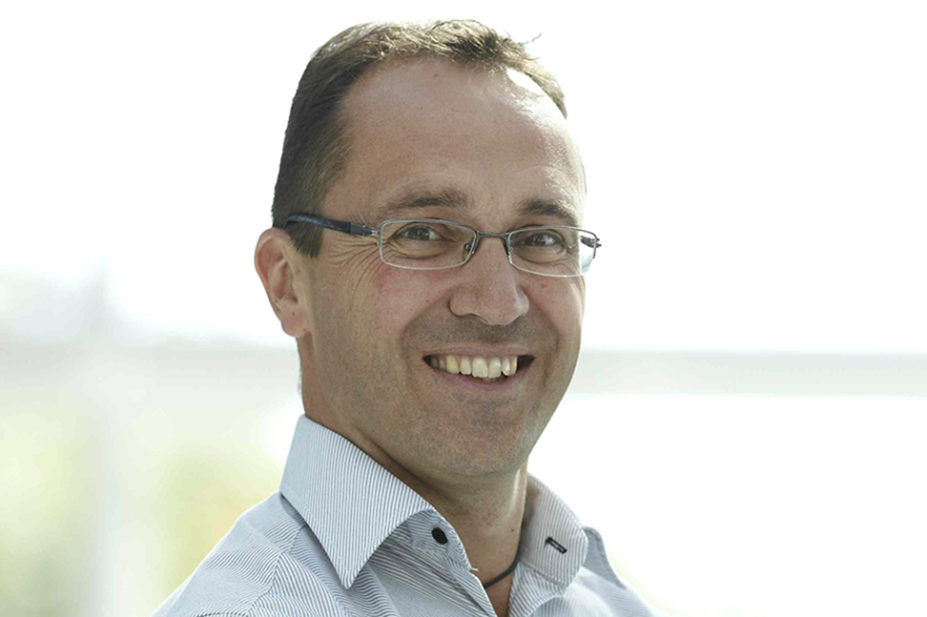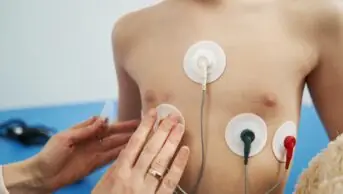
Courtesy of Steve Tomlin
Great Ormond Street Hospital (GOSH) has been at the forefront of new and innovative treatments for children for nearly 170 years, and Steve Tomlin is the man responsible for managing the pharmacy team there.
With 25 years of hospital paediatric pharmacy experience — Tomlin was the first paediatric consultant pharmacist appointed in the UK in 2007 — The Pharmaceutical Journal caught up with him over Zoom to discuss the progress of his specialism, and hospital pharmacy, over the past few years, and to get a sense of what other pharmacists should be wary of when providing care to children and young people.
How has COVID-19 changed the way your department works?
Just the presence of the pharmacist on the ward makes people do things differently and was felt to have a huge impact in terms of medicines safety
It has been about trying to have as few people on site, and as little direct interaction, as possible. Although, when we have tried to restrict being on the wards, the clinician has asked for pharmacists to go back. Just the presence of the pharmacist on the ward makes people do things differently and was felt to have a huge impact in terms of medicines safety. Obviously, with electronic systems you can review everything but it has been a challenge to try and get the balance right. Another challenge has been supplying medicines to our patients. We have closed our hatches and launched a system we’ve called ‘homecare light’. We provide virtually every medicine via either a courier or a postal system, and phone every single patient. What’s been interesting is people have been asking a lot more questions. At the hatch it’s always a bit of a rush, but having that liaison after the event, it’s amazing how many patients want to talk and we’ve got a lot of learning from that. Maybe counselling at the hatch is not the right way forward.
Are you going to keep any of these ways of working?
We are. We’re going to have a mixed model moving forward. Most of our patients aren’t local and we can’t expect them to keep popping into the pharmacy every few weeks to pick up their medicines. We’ve learnt a lot about what their real needs are in the outpatient setting.
Tell me a little bit about your team. How many people are there and what are their roles?
We’ve got quite a big department, with just under 150 staff; the clinical team is about 45 of those. And manufacturing and quality assurance are a separate entity, providing a completely crucial service. With the NHS aseptic review, we are looking for a slightly different model. We know that infusions that are made up at ward level are not very accurate and we had a long discussion this morning about how we provide most medicines ready drawn up. IVs are one of the biggest risks in a hospital and the smaller the child, the more that risk goes up; neonates and premature babies are at the highest risk and intensive therapy unit is where many are being used. So we are reviewing that service.
If you were speaking to a hospital pharmacist who didn’t work in a specialist hospital such as yours, what would you advise them to be looking out for in medicines for children and young people?
I often say paediatric medicine is “real” pharmacy. When I first registered, my boss had a drawer on her table with little cards in it — you looked in “R”, you pulled out ranitidine and it said “2–3mg/kg”. That was the basis of practise. We’ve moved on a long way in the past 20–25 years, which is fantastic, but most drugs are still made for adults. If you’ve got something, which is per kilo, and you’ve got no particular number in your head of what the dose is, the chances of it being wrong are high. If you’re drawing up a liquid, in terms of volume, there’s often not much difference, but the chances of giving significantly different doses is very high.
People talk about the palatability of medicines to children, but it’s liquids that generally taste horrible. A lot of tablets don’t taste at all. Therefore, why don’t we try to give them all tablets? Two- and three-year-olds can quite happily swallow a piece of Lego; therefore, we know they can swallow tablets. It’s more about training the parents.
You must do a lot of work at Great Ormond Street in terms of the administration of medicines. Can you talk me through some of that?
One of the things that really interests me now is dispersible mini-tablets. If they’re dispersible, they provide almost the equivalent of a liquid, but in the form of small tablets, which psychologically offers another advantage. You have to be careful. There’s another bit of work that suggests any more than six mini-tablets puts people off again, but between one and six, it’s an improvement.
3D printing gives you the flexibility of being able to find different doses
3D printing gives you the flexibility of being able to find different doses
Have you explored 3D printing?
We are currently discussing the administration of tacrolimus for transplant patients. There are issues with the liquids, but if you want somebody on a tablet, you want them on exactly the right dose. 3D printing gives you the flexibility of being able to find different doses. If you decide that the dose that you want is actually 3.2573mg, you can do that, and you could do it in the shape of a teddy bear. Several centres around the UK are looking at this. It might not revolutionise the world, but it will be another advance.
How are you involved in the transition from paediatric to adult care?
From a medicine point of view, there are issues, particularly in specialist care. A drug can be commissioned in paediatrics, and then in adult care it’s no longer funded. Internally, anybody who’s starting a new preparation after the age of 15 years, we will try to work out where it is they’re going to transition to and start liaising at the point of starting the drug.
What about the interface with primary care?
Unfortunately, different systems will describe drugs slightly differently. With liquids, particularly if they’re not licensed, there are no equivalencies in bioavailability. Sometimes it’s a solution, sometimes it’s a suspension. Or you’re trying to avoid certain excipients, such as aspartame in a metabolic phenylketonuria patient. It’s a big problem in community pharmacy sometimes, particularly in the big multiples, who often make their own specials. For virtually every special that we’ve come across, you can get away with either one concentration to do everything from a 1kg premature neonate to an adult. At the most, two. And yet, on the market, people make many different strengths. And that is a recipe for disaster. Even with licensed products, for example frusemide, there are many different strengths of licensed liquid. The biggest problem is this — how much are the parents actually going to give? It does not matter what you put on the label, parents carry on giving the same number of mLs. This causes all sorts of problems and there are numerous accounts of errors because of this.
Everyone thinks that children are very different to adults, but 90% of your pharmacokinetics are the same after the age of three years
How much of a problem is confidence in primary care in taking over the care of paediatric patients?
It is an issue. Everyone thinks that children are very different to adults, but 90% of your pharmacokinetics are the same after the age of three years. The hard bit for prescribers is taking accountability, but the BNF for Children is an amazing resource. If it is in there, then you should have some confidence. We are very lucky as a nation to have produced such a book with so much evidence-based advice. And just because something’s unlicensed it doesn’t mean there’s not an evidence base. Spironolactone liquid has been used forever; it is still an unlicensed liquid, but we understand it.
With more pharmacy input into primary care networks, have you been seeing that make a change?
It makes sense, but how do we ensure that primary care network (PCN) pharmacists are equipped? It’d be lovely to have loads of specialist paediatric primary care network pharmacists, but it’s never going to happen. How do we ensure that there is a national paediatric resource for medicines information for the PCNs? We need to look at that. Part of it is around the rethink of consultant pharmacists. How do they work across networks? Somewhere such as GOSH, which is hyper-specialised, we don’t have many dealings with GPs, it’s all with other tertiary centres and some secondary. But we should be really setting a trend, in terms of dissemination of knowledge. Not just on a regional basis, but on a national basis.
Deprescribing is far harder than prescribing
Do you think there needs to be a deprescribing programme in children with learning disabilities?
I think there needs to be a deprescribing programme in all sorts of patients. But they are a complex group of children and it is essential we understand what their needs are. Deprescribing is far harder than prescribing. You’ve got to change the mindset of the patient, and that’s where it becomes complex with people with learning disabilities. That whole aspect of trust. And it’s not always to do with polypharmacy. You could be on one drug and still need deprescribing. It goes back to a real understanding of drugs and all the effects that they might have. It’s understanding how that patient is going to feel if that drug stops.


